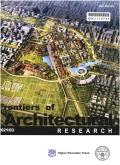Exploring entry-exit correlation coefficient (EEC) as new quantitative social activities performance measurement of public space: The case of Dilworth Park, Philadelphia
IF 3.6
1区 艺术学
0 ARCHITECTURE
引用次数: 0
Abstract
This study explores a new public space performance measure by integrating public space and walking research to examine the relationship between pedestrian traffic volume and social activity intensity in parks and plazas. Introducing the entry-exit correlation coefficient (EEC), the study utilized bootstrap resampling methods to analyze data and compare to 59 manual observations. Findings reveal a statistically significant negative relationship between EEC and social activities, with a coefficient of −0.2. Lower EEC values, indicating closer correlation between entry and exit, were associated with increased social activities in Dilworth Park. The high synchronization observed between EEC and social activities underscores the potential of EEC as a complementary tool to manual observation in public space research. Additionally, the study emphasizes the importance of considering thermal comfort in monitoring public spaces using EEC. While the study focused on a single case study, its results lay the groundwork for future research to apply automated pedestrian counting and EEC as performance measurements for public spaces.
出入相关系数(EEC)作为公共空间社会活动绩效量化新测度的探索——以费城迪尔沃斯公园为例
本研究通过整合公共空间和步行研究,探索了一种新的公共空间绩效衡量方法,考察了公园和广场步行交通量与社会活动强度的关系。引入进出口相关系数(EEC),采用自举重采样方法对数据进行分析,并与59个人工观测值进行比较。研究结果显示,EEC与社会活动之间存在统计学上显著的负相关关系,系数为- 0.2。较低的EEC值,表明进入和退出之间的相关性更强,与迪尔沃斯公园的社会活动增加有关。观察到的EEC与社会活动之间的高度同步强调了EEC作为公共空间研究中人工观察的补充工具的潜力。此外,该研究强调了在使用EEC监测公共空间时考虑热舒适性的重要性。虽然该研究侧重于单个案例研究,但其结果为未来应用自动行人计数和EEC作为公共空间性能测量的研究奠定了基础。
本文章由计算机程序翻译,如有差异,请以英文原文为准。
求助全文
约1分钟内获得全文
求助全文
来源期刊

Frontiers of Architectural Research
ARCHITECTURE-
CiteScore
6.20
自引率
2.90%
发文量
430
审稿时长
30 weeks
期刊介绍:
Frontiers of Architectural Research is an international journal that publishes original research papers, review articles, and case studies to promote rapid communication and exchange among scholars, architects, and engineers. This journal introduces and reviews significant and pioneering achievements in the field of architecture research. Subject areas include the primary branches of architecture, such as architectural design and theory, architectural science and technology, urban planning, landscaping architecture, existing building renovation, and architectural heritage conservation. The journal encourages studies based on a rigorous scientific approach and state-of-the-art technology. All published papers reflect original research works and basic theories, models, computing, and design in architecture. High-quality papers addressing the social aspects of architecture are also welcome. This journal is strictly peer-reviewed and accepts only original manuscripts submitted in English.
 求助内容:
求助内容: 应助结果提醒方式:
应助结果提醒方式:


